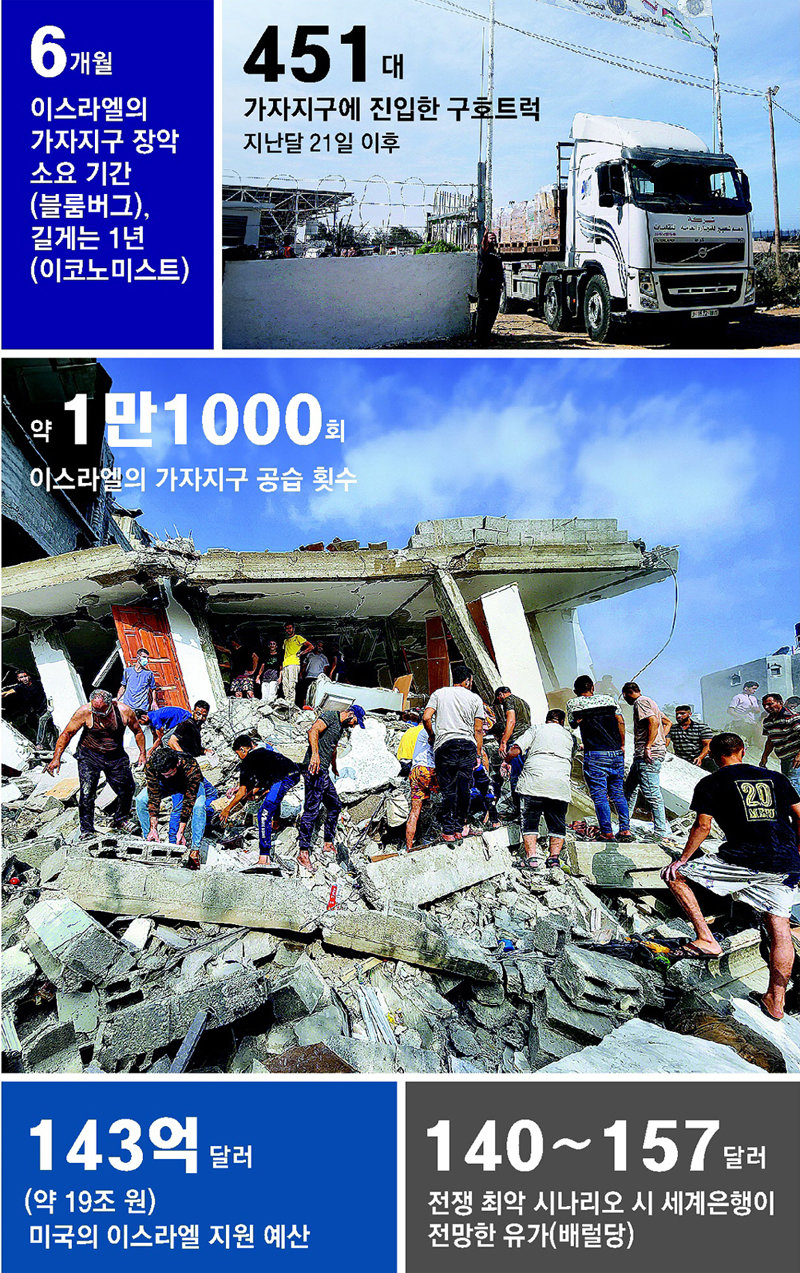Tensions and divisions between the two countries, including ground war in Gaza
[중동전쟁 한 달]
Blinken calls for “use of small bombs”
Netanyahu threatens to release hostages first
Israel: “We will eliminate Hamas leaders”… Hezbollah: All-out war with Israel possible
The United States and Israel, which have maintained a close alliance since the founding of Israel in 1948 and spoke with one voice even after the surprise attack by the Palestinian armed group Hamas on the 7th of last month, are showing signs of division as the war approaches one month later. As the death toll in the Gaza Strip approaches 10,000, the U.S. Joe Biden administration clearly appears to be burdened by its blind support for Israel. Accordingly, there are strong calls for measures to minimize civilian casualties, such as stopping humanitarian fighting and using small bombs.
However, Israeli Prime Minister Benjamin Netanyahu expressed a clear refusal, saying he could not accept America’s demands. Israeli Army Chief of Staff Herzy Halevi also visited the Gaza Strip in person and expressed confidence in the ground war. Hamas is also preparing for a long-term war by frequently discussing the war situation with Iran. According to Iran’s state-run IRNA news agency, Hamas political leader Ismail Haniyeh recently met Supreme Leader Ayatollah Ali Khamenei in the Iranian capital Tehran.
 One month of the Middle East war in numbers
One month of the Middle East war in numbersOn the 4th (local time), President Biden gave a thumbs up to a reporter’s question, “Is there any progress in stopping humanitarian fighting in the Gaza Strip?” and said, “Yes.” This is interpreted as a response that mentioned Israel’s measures to temporarily allow passage on major highways to evacuate residents of the Gaza Strip.
A day ago, U.S. Secretary of State Tony Blinken met with Prime Minister Netanyahu in Israel and repeatedly pressured him to stop humanitarian fighting. According to the New York Times (NYT), Secretary Blinken recommended the use of small bombs to minimize civilian casualties. There have been reports that Israel has used about 1 ton of aerial bombs during air strikes on the Jabaliya refugee camp in the Gaza Strip since the end of last month, and this is interpreted as a statement of concern over the actual increase in civilian deaths.
However, Prime Minister Netanyahu drew a line at a separate press conference immediately after the meeting with Secretary Blinken, saying, “I reject any temporary ceasefire plan that does not include a plan to release Israeli hostages held by Hamas.” The temporary ceasefire (ceasefire) that Prime Minister Netanyahu referred to is a cessation of hostilities in the Gaza Strip or throughout Israel for a set period of time in accordance with the agreement between Israel and Hamas. It is a different concept from pause. Nevertheless, since it came immediately after the meeting with Secretary Blinken, there is analysis that it actually drew a line against the United States’ demands. NYT also commented, “Prime Minister Netanyahu has rejected the United States.”
Israeli Defense Minister Yoav Gallant also expressed his determination at a press conference on the 4th, saying, “We will find and eliminate Yehya Shinwar, a high-ranking Hamas official (who led the surprise attack in this war).” He said, “If the residents of the Gaza Strip reach Sinwar first, the war will be shortened,” and put pressure on the residents of Gaza to also cooperate in hunting down Sinwar.
“All options are under consideration,” Hezbollah leader Hassan Nasrallah said in his first public address since the outbreak of the three-day war. He mentioned the possibility of participating in the war, saying, “A full-scale war with Israel can also be realized.” However, he also indicated that he would wait to see the United States’ attitude for now, saying, “As the United States started it first, only the United States can end this war.” The NYT analyzed that Hezbollah will only engage in ‘controlled combat’ in order to exhaust Israel’s weapons and lower its morale.
The meeting between Haniyeh and Khamenei is also attracting attention. After the outbreak of war, Haniyeh met with Foreign Minister Hossein Amir Abdollahian several times, but this was the first time he met Khamenei, the supreme leader of Iran, a theocratic country.
Anger throughout the Muslim world toward Israel is growing. The foreign ministers of four countries, including Saudi Arabia, the United Arab Emirates (UAE), Jordan, and Egypt, called for an “immediate ceasefire” through a joint press conference after meeting with Secretary Blinken in the Jordanian capital Amman on the 4th. However, the United States is keeping its distance from the Arab world’s demand for an ‘immediate ceasefire’. This is because it gives Hamas time to reorganize its battle lines.
On the same day, President Recep Tayyip Erdogan announced that he would file a complaint against Prime Minister Netanyahu to the International Criminal Court (ICC) for Israel’s human rights violations and war crimes following the outbreak of war. President Erdogan also summoned his country’s ambassador to Israel, saying, “He (Prime Minister Netanyahu) is no longer a conversation partner.”
Washington =
Source: Donga
Mark Jones is a world traveler and journalist for News Rebeat. With a curious mind and a love of adventure, Mark brings a unique perspective to the latest global events and provides in-depth and thought-provoking coverage of the world at large.